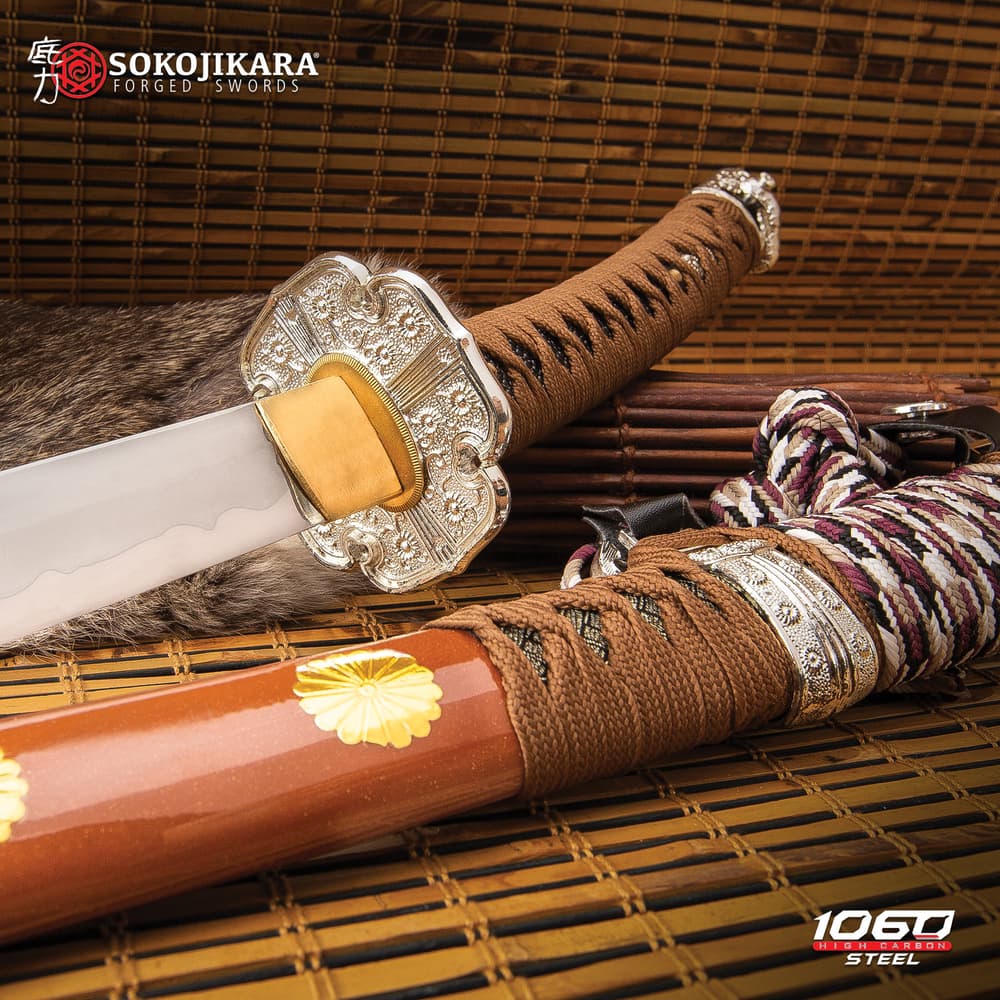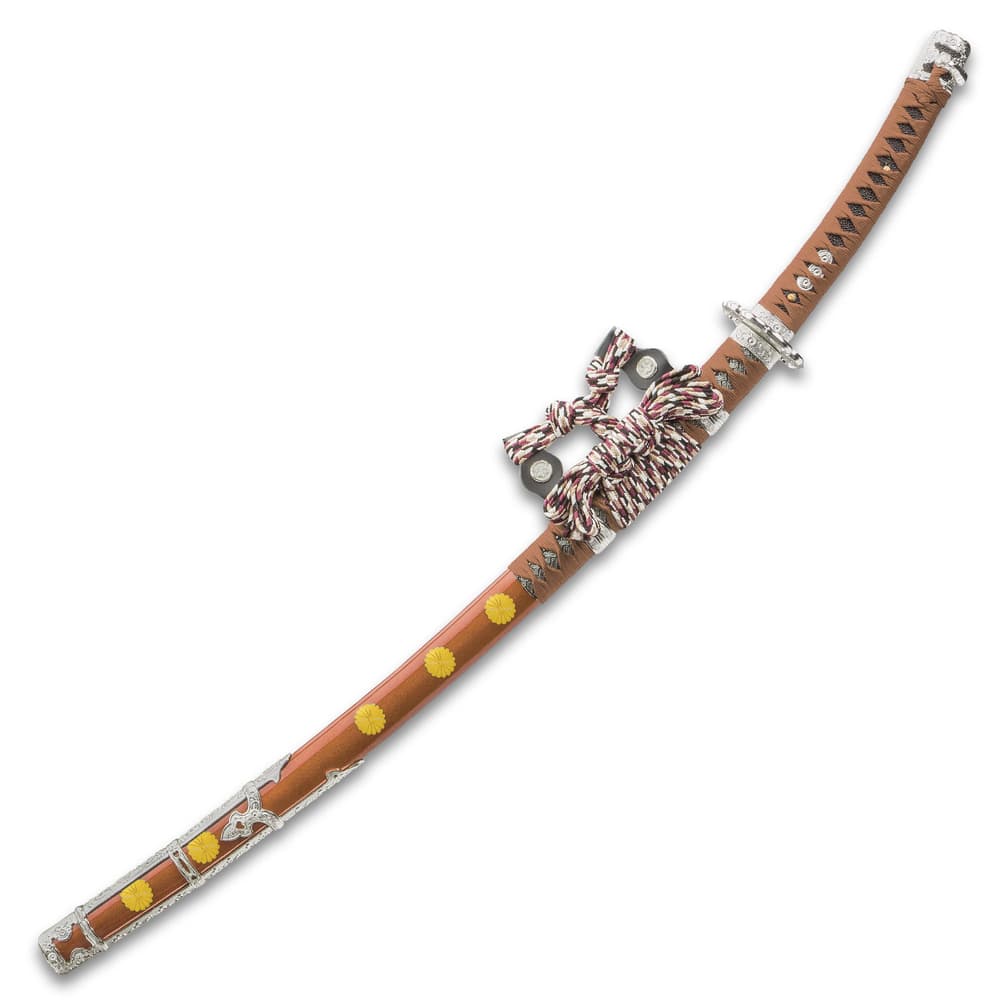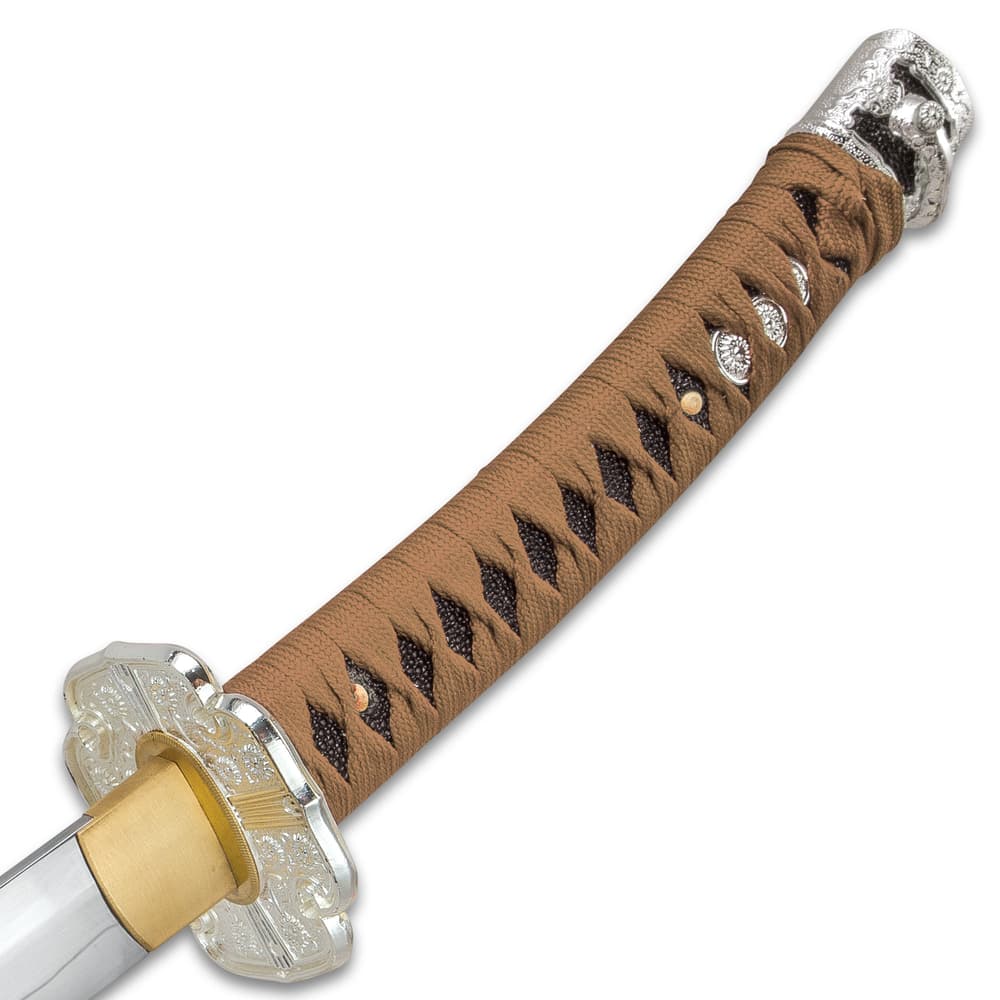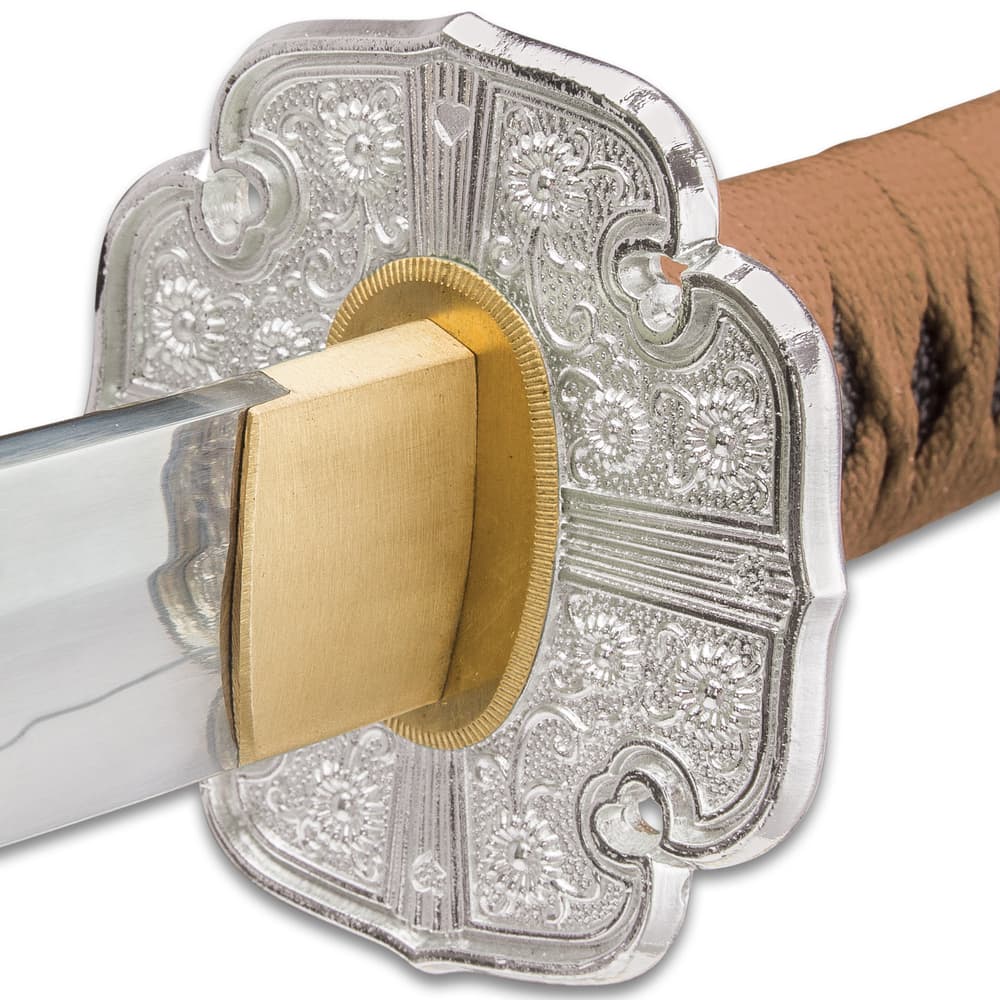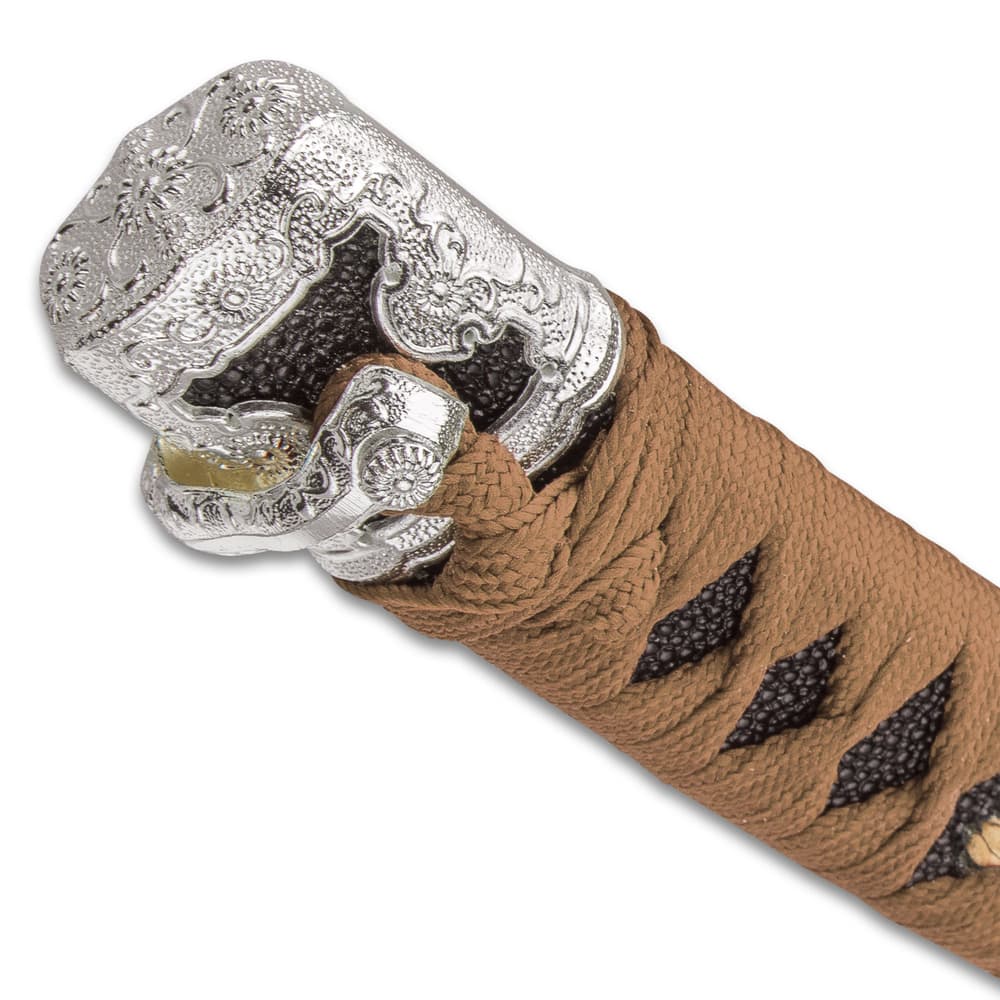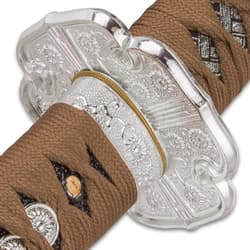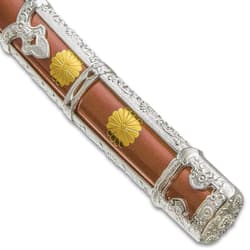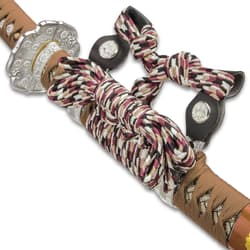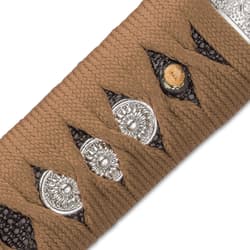Sokojikara Natsukashii Handmade Tachi / Samurai Sword
$109.98
Price reduced from
$196.99
to
You Save 44%
Act Fast! Limited Time Only!
- HAND-FORGED 1060 STEEL BLADE: Full-tang 28 3/8” clay-tempered blade with a natural hamon line, offering supreme sharpness and durability.
- GENUINE RAY-SKIN HANDLE: Wrapped in traditional braided ito, providing a secure, comfortable grip for both display and real-world use.
- INTRICATE BRASS TSUBA: Exquisitely detailed with relief designs, reflecting the tachi's noble history and craftsmanship.
- LACQUERED SAYA WITH HANGERS: Hand-lacquered saya features leather hangers with metal accents, allowing for traditional cavalry-style carrying.
- HEIRLOOM QUALITY: Built to be cherished and passed down through generations, this tachi embodies the best of Japanese swordcraft.
- In Stock — Ships Today!
This product cannot be express shipped.
- HAND-FORGED 1060 STEEL BLADE: Full-tang 28 3/8” clay-tempered blade with a natural hamon line, offering supreme sharpness and durability.
- GENUINE RAY-SKIN HANDLE: Wrapped in traditional braided ito, providing a secure, comfortable grip for both display and real-world use.
- INTRICATE BRASS TSUBA: Exquisitely detailed with relief designs, reflecting the tachi's noble history and craftsmanship.
- LACQUERED SAYA WITH HANGERS: Hand-lacquered saya features leather hangers with metal accents, allowing for traditional cavalry-style carrying.
- HEIRLOOM QUALITY: Built to be cherished and passed down through generations, this tachi embodies the best of Japanese swordcraft.
$109.98
Price reduced from
$196.99
to
The Sokojikara Natsukashii Tachi brings ancient Japanese swordcraft into the 21st century, blending modern materials with time-honored techniques. This 41" sword is a sublime example of the traditional tachi, a predecessor to the katana, and features a full-tang, 28 3/8" 1060 high carbon steel blade. Expertly hand-forged and clay-tempered, the blade boasts a natural hamon line and unmatched sharpness. While its design is historically inspired, the Natsukashii is more than a relic—its sleek, curved profile and flawless craftsmanship make it a functional and powerful sword that competes with modern tactical blades.
The hardwood tsuka is wrapped in genuine ray skin and traditional braided ito, extending seamlessly onto the saya for an elegant look. The brass tsuba, fuchi, kashira, and menuki are adorned with intricate reliefs, adding to the regal charm of this tachi. A hand-lacquered saya completes the ensemble, featuring traditional cavalry-style hangers crafted from genuine leather and polished metal insignia accents. Whether you're a seasoned collector or just beginning your swordcraft journey, the Natsukashii Tachi is built to last for generations, carrying forward your legacy in hand-forged steel.
